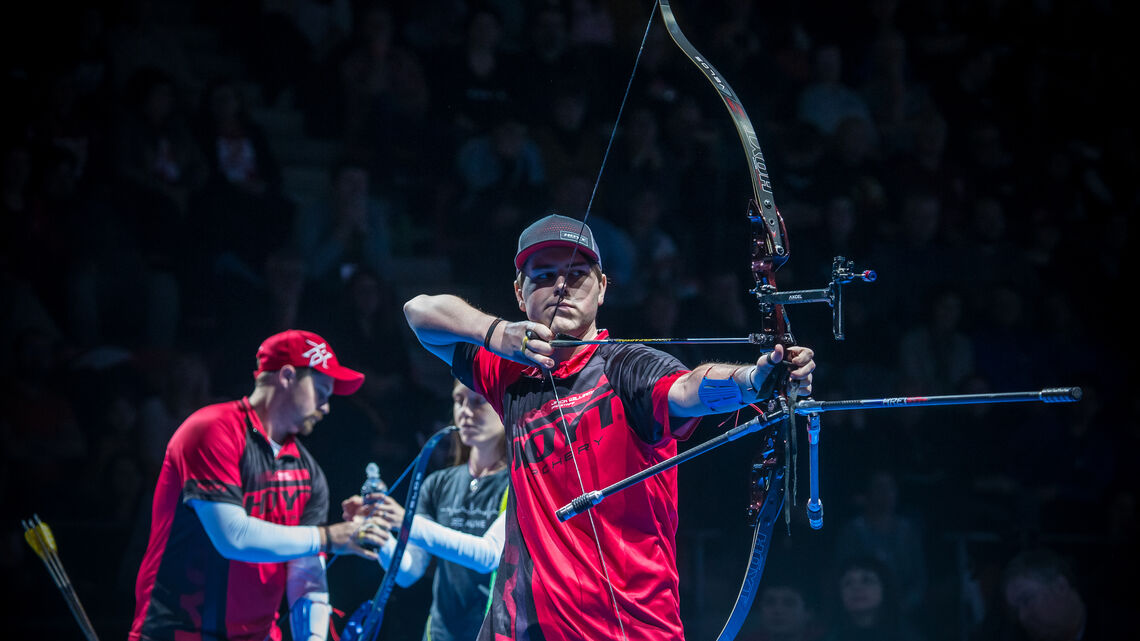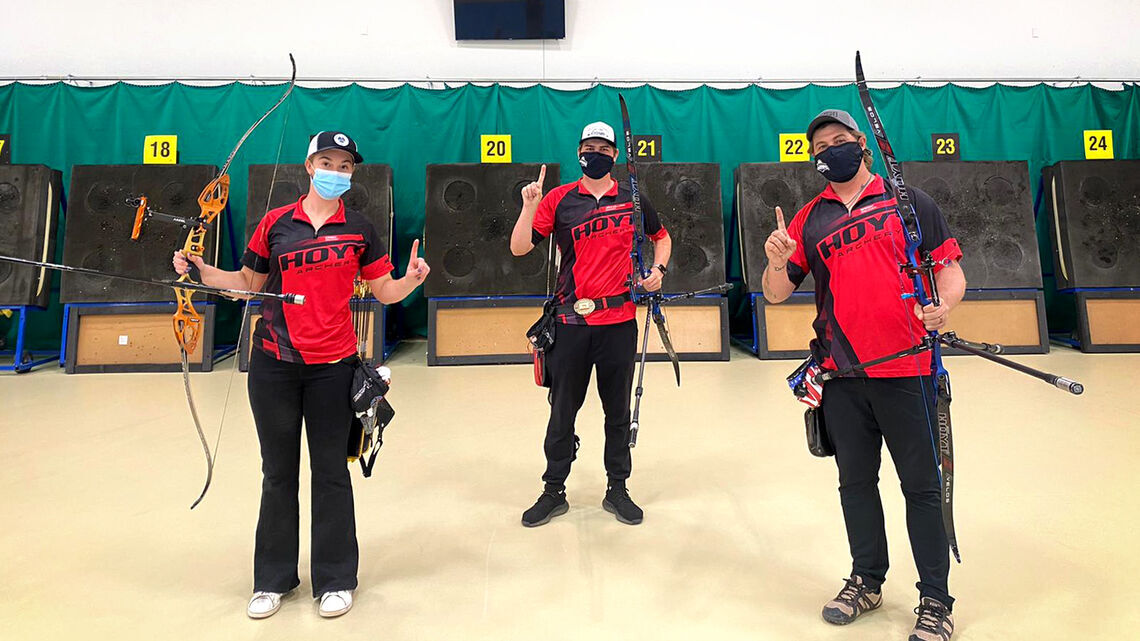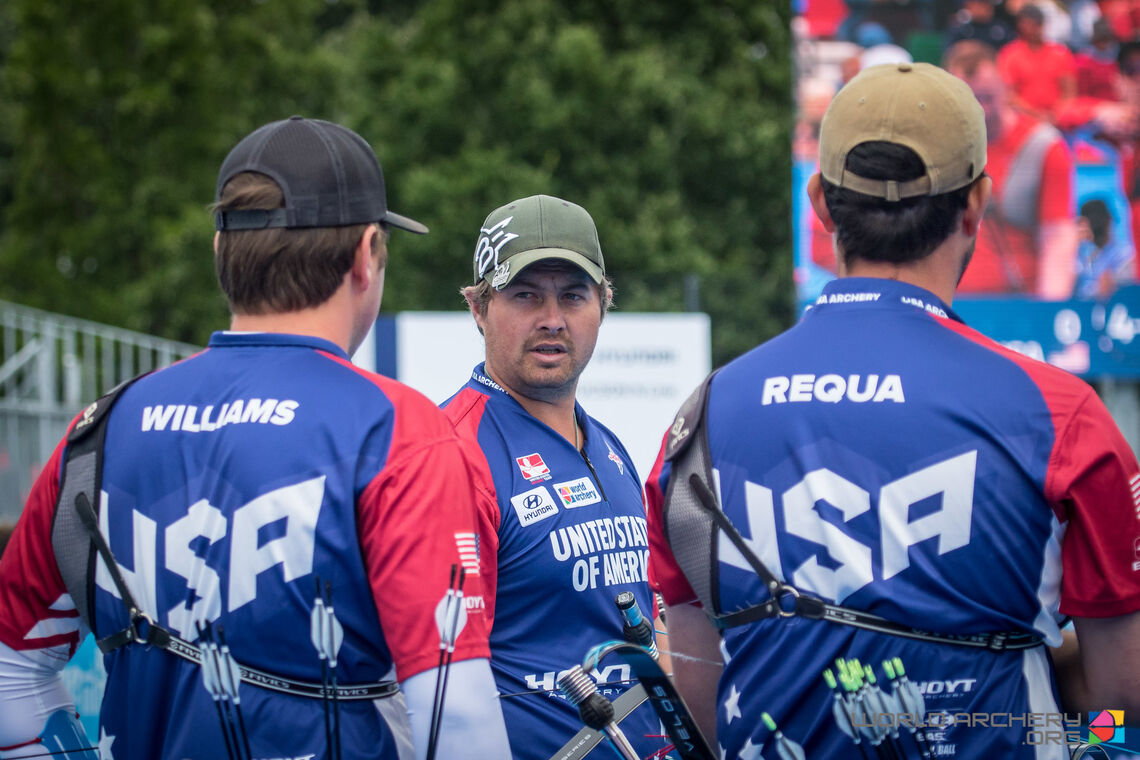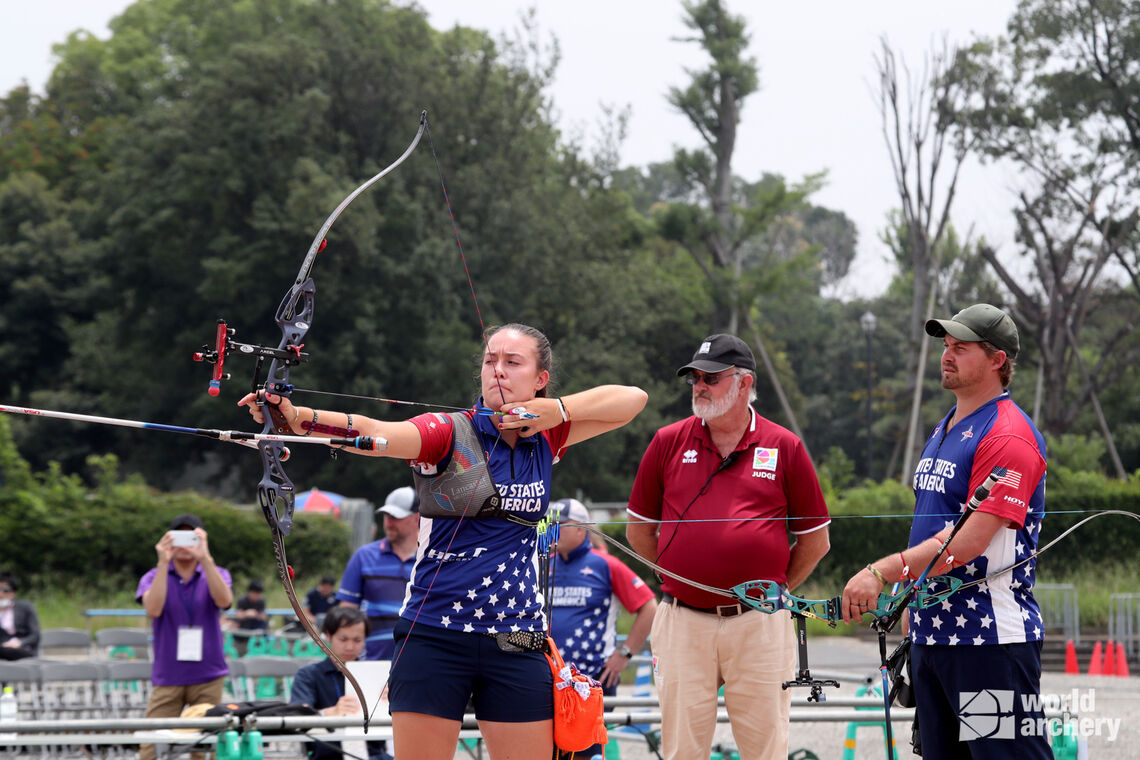Jack Williams asserting himself in Team USA hierarchy

Jack Williams spoke, and his teammates listened.
Consulting with Casey Kaufhold and Brady Ellison prior to the Indoor Archery World Series Finals in February, the 20-year-old announced his preference to shoot last for the defending champion Lancaster Archery Supply team in this year’s unique competition format.
“Guys, I’ll anchor it,” Williams said, demonstrating the preternatural poise that has defined his young career.
With Ellison, the world number one and reigning World Archery Champion, setting the tone early and Kaufhold delivering consistent 10s in the second slot, Williams relished the opportunity to handle the pressure of delivering the closing arrow each end, should a critical situation arise.
Such instances were a distinct possibility against The Golden Arrow, Lancaster’s opponent in the remote recurve final.
The return of the 12-ring that debuted during last summer’s Lockdown Knockout added variance that meant each archer had to be at the top of their game. Measuring smaller than the X-ring at just 15 millimetres in diameter, the little white dot stationed between the eight and seven rings brought with it a variety of strategic approaches.
Whether through confidence or desperation, attempting the mark was a risky proposition.
“None of us had really shot a target like that, other than a couple of days before, so for Jack to feel really confident in it was absolutely great,” Kaufhold said. “I think that was a big part of our winning dynamic."

The California native’s confidence was never more apparent than in his individual match of the final against Clement Jacquey. Following Ellison’s lead in the opener, Williams gambled early and often on the 12-ring against the Frenchman, looking to deliver on his self-assurance from the beginning.
Williams trailed by one point after five arrows when he aimed and hit the dot, taking control of the contest and pushing Jacquey, who hadn’t missed the 10-ring through six shots, out of his comfort zone.
The momentum carried through to the end. Williams used his last arrow to land a second 12 – though he didn’t need it – to win, 121-113, and secure a two-point lead to start the team match. (Under this format, it’s the team head-to-head that decided the winner.)
“There’s definitely a bit of strategy involved when you try to apply pressure early in the match,” Williams said. “If you hit the 12 early, it can crush the other side’s enthusiasm, just to kind of show power and be like, ‘Boom, there, that’s a 12. Good luck with that’.”
Williams’ Lancaster teammates, meanwhile, found themselves buoyed by his unflappable demeanour. Confidence begets confidence, they all agreed. While it could have just as easily been Ellison or Kaufhold who took the reins from their remote venue at the USA’s national training centre in Chula Vista, it was Williams who felt best positioned – and comfortable enough to say so – to assert himself on the day.
“You have to be confident in your teammates because it just makes your job easier and less stressful for everyone,” Ellison said. “We all shoot with each other enough that we know each other’s skill – when we’re shooting well and what everyone is capable of.”

Williams and Kaufhold have both credited Ellison with establishing a team atmosphere that is affable and friendly. At 32 years old, the three-time Olympian is over a decade older than Williams and climbed his first world championship podium before Kaufhold, now 17, was born.
Yet the gap in age and credentials hasn’t affected the team dynamic. Instead, Ellison has gone out of his way to make himself available as a resource should his younger teammates solicit his advice. He’s even relocated his own family closer to the centre from his home in Arizona.
Kaufhold relayed a story from their time competing together on the Hyundai Archery World Cup circuit in 2019. Making her debut in the mixed team event alongside Ellison at the first stage in Medellin, Colombia, the pair advanced to the gold medal match when a wave of anxiety and self-doubt took over.
Kaufhold, just 15 at the time, said she felt like an imposter.
Ellison responded by reminding Kaufhold that her youth made her no less deserving of competing on such a big stage.
“Before the match, I didn’t think I had enough experience or the same clout as the other archers, so I felt below everybody else,” Kaufhold said. “Brady helped me realise that I had put in the work and that I was there for a reason.”

Williams described a similar relationship – one that has evolved into something of a ‘big brother, little brother’ dynamic as the latter has developed as an archer. In a twist of the numbers, it is now Williams that sits top of USA Archery’s national ranking, despite Ellison retaining the distinction of world number one.
Nonetheless, Williams maintains a deep reverence for Ellison, who has paved the way for so many archers from the USA as he continues to excel among the world’s elite.
“He definitely wants to win. He wants to be the one on top,” Williams said. “But he wants me to be second, and really wants me to be the one right behind him. Because, ultimately, that’s our best chance for Olympic medals: when everybody on the team is good.”
Williams evaluates his position leading the USA rankings with a level of surrealism. At some point, he said, he began entering each competition with the intention of winning. This means, by default, that anything less is considered a disappointment, while accomplishing the goal is somewhat expected.
“It’s strange because, of course, I don’t go into a tournament expecting to lose, so that mentality is there,” Williams said. “And if you don’t lose, you end up being number one, if that makes sense.”
“It feels natural, even though I know it isn’t. Brady – that’s obviously a big rock to get over. It was like, ‘whoa’."
Williams’ aspirations require that he view Ellison as an obstacle as well as a teammate, while Ellison has no desire to relinquish his world-leading standing. But rather than viewing each other as adversaries, they each look across the practice hall at a valuable training partner, unified in a mutually beneficial relationship.
Combined with a common goal as a team – with that three-athlete quota for the Tokyo 2020 Olympic Games still on the agenda – and a genuine friendship away from the shooting range, any potential hostility is held at bay.
“At the end of the day, I want to win. Being a jackass doesn’t help the team win,” Ellison said. “Especially with archery becoming a team sport. We have two team events at the Games and just one individual. We’re trying to get that sense of the individual out of it and think that we’re a team first.”
Both athletes have a claim at the top spot, depending on the given day. Everywhere, that is, except on the golf course
“I am, by far,” Ellison said when asked who the better golfer is. “I will say, though, I was highly, highly impressed by him just picking up some clubs and watching YouTube, which apparently is something this generation is capable of doing."
But even Williams’ success on the links speaks to his acumen for picking up sports quickly. It wasn't that long ago when Williams first picked up a bow, setting aside his love of fencing to concentrate on a different solo endeavour.
Coming out of a global pandemic that has distorted our perception of just how far young archers like Jack Williams and Casey Kaufhold have come, and how much the established elite like Brady Ellison have regressed (or improved, or conserved, or changed), the upcoming year promises to be a compelling showcase with the postponed Olympic Games coming into focus.
“I’m on his heels,” Williams said of Ellison, his confidence shining through once again. “I think we’ll both be pushing each other for a long time.”











